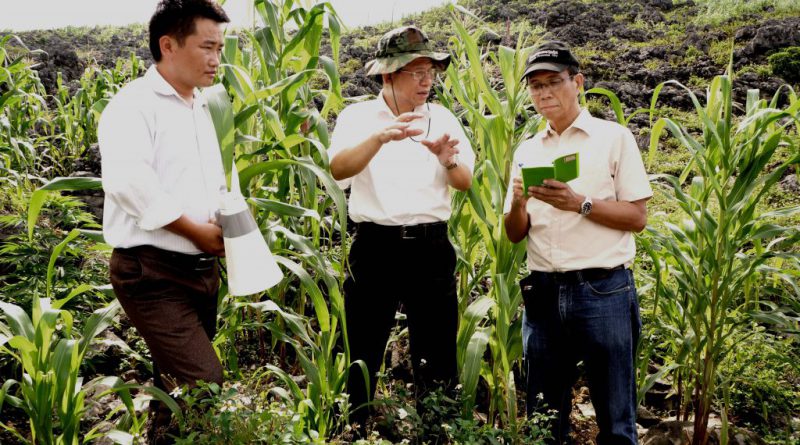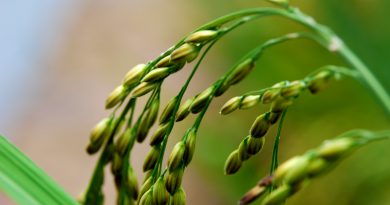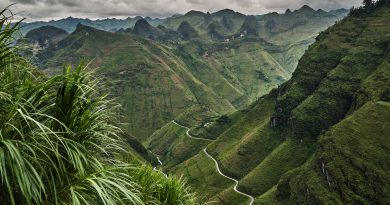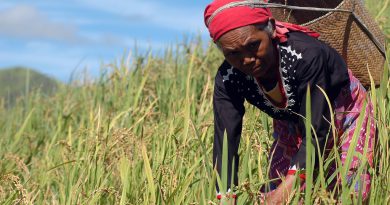What is the Globally Important Agricultural Heritage Systems (GIAHS) project?
IAHS is a project that was started in 2002 by Food and Agriculture Organization (FAO, based in Rome, Italy), the United Nations agency that aims to ensure food security for all.
GIAHS was founded against a background of an overemphasis on productivity by modern agriculture that resulted in environmental problems such deforestation and water pollution throughout the globe, causing destruction of unique local cultures, landscapes and biodiversity.
The overall goal of the project is to identify and safeguard, from the bad effects of modernization, Globally Important Agricultural Heritage Systems and their associated landscapes, traditional agriculture, agricultural systems and agricultural diversity, and knowledge systems and land use through dynamic conservation in order to pass them on to future generations.
While the United Nations Educational, Scientific and Cultural Organization (UNESCO) aims to designate and protect real estates such as historic monuments and buildings and natural areas, the purpose of GIAHS is to seek maintenance and conservation of agricultural systems to pass them to future generations, through the granting of special designation.
5 sites have been designated in Japan: Noto’s satoyama and Satoumi (Noto peninsula, Ishikawa prefecture, June 2011), Sado’s satoyama in Harmony with Crested Ibis (Sado city, Niigata prefecture, June 2011), Traditional tea-grass integrated system in Shizuoka(Local name:Chagusaba) (Shizuoka prefecture, May 2013), Managing Aso Grasslands for Sustainable Agriculture (Kumamoto prefecture, May 2013), Kunisaki Peninsula Usa IntegratedForestry, Agriculture and Fisheries System (Oita prefecture, May 2013)

 |
 |
 |
| 1 Chiloe Agriculture (Chile) | 2 Andean Agriculture (Peru) | 3 Ifugao Rice Terraces (Philippines) |
| Chiloe is a home of potato and two hundred varieties of native potatoes are still cultivated. Their ancestral farming practices have been handed down from generation to generation mostly by women. | Farmers dig trenches around their potato fields and fill them with water. The water, which is warmed by sunlight, gives off warm steam that protects crops against frost during the night, when temperatures drop. This is an agricultural system ideally suited to a tough environment at 4,000 meters above sea level. | An ingenious irrigation system has been developed through communal water use with rice terraces and cultivation of rice that can withstand an environment at 1,000m above sea level. The Ifugao rice terraces have also been registered as a UNESCO World Heritage Site. |
 |
 |
.jpg) |
| 4 Saffron Heritage of Kashmir | 5 Traditional Agriculture Systems, Koraput (India) | 6 Kuttanad Below Sea Level Farming System (India) |
| The unique cultivation of saffron has continued for over 2500 years and even today there are 17,000 families engaging in the cultivation. Proactive efforts are being made towards improving productivity, marketing, raising quality and price, as well as promoting direct sales. | Since ancient times, the region has been famous as the origin of medical plants and rice. A number of small tribes still practice farming in ancestral ways. Some farm families cultivate nearly 400 varieties of rice, and the region is a home for numerous indigenous plants. | It is a rare environment in which rice paddies expand at the sea level. People started to live in the region, engaging in fishery, and also developed techniques to cultivate farm goods such as rice. Kuttanad Below Sea Level Farming System has a history of over 150 years, and also serves as a place to foster diverse organisms. |
.jpg) |
.jpg) |
 |
| 7 Rice-Fish Agriculture (China) | 8 Hani Rice Terrace System (China) | 9 Wannian Traditional Rice Culture |
| The agricultural system has continued since the Han Dynasty 2000 years ago. In Qingtian Couty, fish deters pests and weeds and works as fertilizer for the rice. The fish plays various roles such as daily food supply and source of income for the farmers. | The villages are built on mountainsides. The area above the villages are the flourishing forests, and the area below are the rice terraces. Water is abundant in the area, despite the absence of reservoirs. The unique irrigation system and indigenous agricultural production methods are still used today. | The Wannian people have continued traditional rice culture since ancient times. Paddy fields, where indigenous species of rice is cultivated, and the surrounding forests, which protect against erosion and floods, compose a sustainable agricultural environment that contributes to the conservation of biodiversity. |
 |
.jpg) |
.jpg) |
| 10 Dong’s Rice Fish Duck System | 11 Aohan Dryland Farming System (China) | 12 Pu’er Traditional Tea Agrosystem (China) |
| The Dong ethnic minority have continued the system of raising fish and ducks in paddy fields for over 1000 years. This system in the paddy fields contributes toward the biodiversity of the area as well as to soil and water conservation, pest control and adaptation to the climate. | Broomcorn millets and foxtail millets are the most common crops cultivated in the region. They are the main crops for disaster relief and also economically play a significant role. The structure in the dryland farming system connects China’s ancient farming and grassland culture. | Pu’er City is known as the provenance of tea. The ethnic group which have cultivated tea trees for over 1,800 years and have first established tea usage still live in the region, contributing to preserve the ecosystem and the ancient tea culture. |
.jpg) |
 |
.jpg) |
| 13 Kuaijishan Ancient Chinese Torreya (China) | 14 Xuanhua Traditional Vineyards System | 15-17 Oases of the Maghreb (Algeria, Tunisia, Morocco) |
| It is said that Torreya trees have been cultivated since the time of Qin dynasty. Torreya trees are edible and made into drugs or used for processed products. Ancient grafting techniques and a wide range of knowledge to use the trees in daily life have been enriched. | Xuanhua grape cultivation has a history of more than 1,300 years. Most of them grow under funnel-shaped grape trellis at the backyards of houses. It is an agricultural heritage which is found in an urban area. | In Maghreb oases, diverse trees such as date palm and crops coexist supported by irrigation systems. Despite the harsh climate, the region produces a surprising variety of fruits and vegetables. |
.jpg) |
.jpg) |
.jpg) |
| 18-19 Massai Pastoral System (Tanzania, Kenya) | 20 Agro-forestry (Tanzania) | 21 Noto’s Satoyama and Satoumi (Japan) |
| Throughout the ages, the Massai and Tapade people of Tanzania and Kenya have led pastoral farming lives based on the traditions knowledge handed down by their ancestors. Today, they continue to adapt to social and environmental changes while making use of experience of their people or of the region. | Agro-forestry system, in which coffee, crops and herbs are cultivated in between timber trees and banana trees, has been established in the area. This system allowed farmers to grow a wide range of crops with superior pest management. | Landscapes of Satoyama comprised of rice terraces, reservoirs and others have been passed down, as well as traditional techniques such as the fishery of “Ama” skin diving and Agehama-style salt manufacturing which utilize resources in Satoumi. Many of the customs and cultures are tied together with the life of agricultural communities. |
 |
 |
.jpg) |
| 22 Sado’s Satoyama in harmony with Japanese crested ibis | 23 Traditional tea-grass integrated system in Shizuoka (Local name: Chagusaba) | 24 Managing Aso Grasslands for Sustainable Agriculture (Japan) |
| Sado is blessed with mountains and deep forests which contribute to maintain rich ecosystem. Farming methods to foster organisms and its certification system are being promoted. As one of the farming methods promoted, water is kept during winter at rice paddies which are feeding grounds for crested ibis. | In the major production area of tea in Shizuoka, “Chagusa” traditional farming technique which uses grass such as Japanese silver grass is implemented, and locally distinctive biodiversity is being conserved. | Aso has a circulative agriculture which sustainably utilizes grasslands around one of the world’s largest calderas. As a result, the circulative agriculture is conserving the natural environment. |
.jpg) |
||
| 25 Kunisaki Peninsula Usa Integrated Forestry, Agriculture and Fisheries System (Japan) | ||
| In Usa region in Kunisaki Peninsula, land and water are effectively used and are forming rich rural culture. Circulative agroforestry with sawtooth oak and water reservoir which provides abundant farm and forestry products as well as rich eco system are practiced in the region. |
Source: Ministry of Agriculture, Forestry and Fisheries of Japan(Photos provided by FAO)



